Filter by
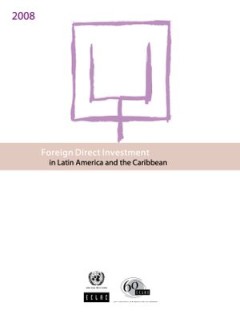
Foreign Direct Investment in Latin America and the Caribbean 2008
In 2008, inward foreign direct investment (FDI) in Latin America and the Caribbean rose to a new record high despite slowing with respect to the previous year, and the region's outward foreign direct investment (OFDI) reached its second highest level ever. Considering the economic and financial turmoil of the times, these results are surprisingly positive, but caution needs to be exercised in t…
- Edition
- -
- ISBN/ISSN
- 9789211217025
- Collation
- -
- Series Title
- -
- Call Number
- 650

Foreign Direct Investment in Latin America and the Caribbean 2007
Latin America and the Caribbean received record levels of foreign direct investment (FDI) in 2007, with inflows surpassing the US$ 100 billion mark for the first time ever. This development is all the more significant because the previous record was set in 1999 in the context of one-off privatizations. The upsurge in investment was fuelled mainly by market-seeking transnational corporations (TN…
- Edition
- -
- ISBN/ISSN
- 9789211216684
- Collation
- -
- Series Title
- -
- Call Number
- 650
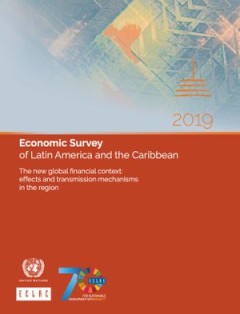
Economic Survey of Latin America and the Caribbean 2019 : The new global fi…
The 2019 edition of the Economic Survey of Latin America and the Caribbean consists of three parts. Part I outlines the region’s economic performance in 2018 and analyses trends in the early months of 2019, as well as the outlook for the rest of the year. It examines the external and domestic factors that have influenced the region’s economic performance, analyses the characteristics of eco…
- Edition
- -
- ISBN/ISSN
- 9789211220209
- Collation
- -
- Series Title
- -
- Call Number
- 650
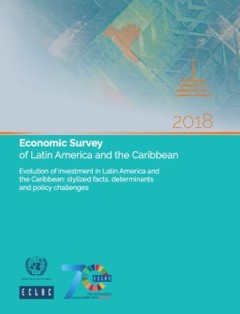
Economic Survey of Latin America and the Caribbean 2018 : Evolution of invest…
The 2018 edition of the Economic Survey of Latin America and the Caribbean, its seventieth issue, consists of three parts. Part I outlines the region’s economic performance in 2017 and analyses trends in the early months of 2018, as well as the outlook for the rest of the year. It examines the external and domestic factors that have influenced the region’s economic performance, analyses the…
- Edition
- -
- ISBN/ISSN
- 9789211219975
- Collation
- -
- Series Title
- -
- Call Number
- 650
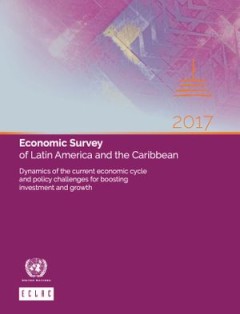
Economic Survey of Latin America and the Caribbean 2017 Dynamics of the curr…
The 2017 edition of the Economic Survey of Latin America and the Caribbean consists of three parts. Part I outlines the region’s economic performance in 2016 and analyses trends in the early months of 2017, as well as the outlook for the rest of the year. It examines the external and domestic factors that have influenced the region’s economic performance and draws attention to some of the m…
- Edition
- -
- ISBN/ISSN
- 9789211219609
- Collation
- -
- Series Title
- -
- Call Number
- 650
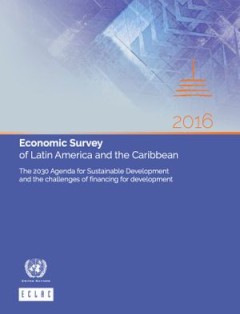
Economic Survey of Latin America and the Caribbean 2016 : The 2030 Agenda for…
This, the sixty-eighth edition of the Economic Survey of Latin America and the Caribbean, which corresponds to the year 2016, consists of three parts. Part I outlines the region’s economic performance in 2015 and analyses trends in the first half of 2016, as well as the outlook for the rest of the year. It examines the external and internal factors influencing the region’s economic performa…
- Edition
- -
- ISBN/ISSN
- 9789211219197
- Collation
- -
- Series Title
- -
- Call Number
- 650
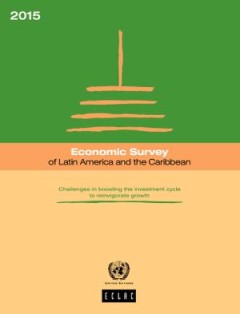
Economic Survey of Latin America and the Caribbean 2015 : Challenges in boost…
The 2015 edition of the Economic Survey of Latin America and the Caribbean consists of three parts. Part I outlines the region’s economic performance in 2014 and analyses trends in the first half of 2015, as well as the outlook for the rest of the year. Part II analyses the dynamics of investment in Latin America and the Caribbean, the relationship between investment and the business cycle, t…
- Edition
- -
- ISBN/ISSN
- 9789211218954
- Collation
- -
- Series Title
- -
- Call Number
- 650
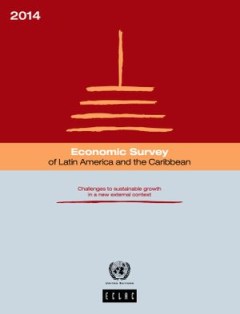
Economic Survey of Latin America and the Caribbean 2014 : Challenges to susta…
The 2014 edition of the Economic Survey of Latin America and the Caribbean consists of three parts. Part I considers the economic performance of the region in the first half-year as well as the outlook for the year as a whole, against the backdrop of a world economy marked by opportunities and setbacks. The causes of the modest economic growth forecast for the year are examined and attention is…
- Edition
- -
- ISBN/ISSN
- 9789211218626
- Collation
- -
- Series Title
- -
- Call Number
- 650
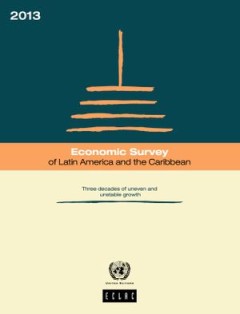
Economic Survey of Latin America and the Caribbean 2013 : Three decades of un…
The sixty-fifth edition of Economic Survey of Latin America and the Caribbean covers the two-year period 2012 2013. As in previous editions, the first part examines the recent performance of the economies of the region and the outlook for the current year. The second part discusses long-term aspects of the economic development of Latin America and the Caribbean. Country notes, which look at the…
- Edition
- -
- ISBN/ISSN
- 9789211218336
- Collation
- -
- Series Title
- -
- Call Number
- 650
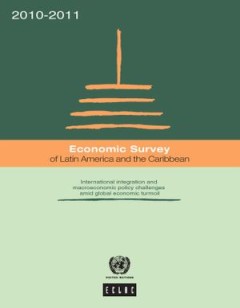
Economic Survey of Latin America and the Caribbean 2010-2011
After contracting in 2009, GDP expanded by 5.9% in Latin America and the Caribbean in 2010, albeit with the region's hallmark differences in performance from one country to another. The expansion in output was driven by strong domestic demand in the forms of both consumption and investment, and by buoyant external demand. On the domestic demand side, private consumption (up 5.9%) was sustained …
- Edition
- -
- ISBN/ISSN
- 9789211217650
- Collation
- -
- Series Title
- -
- Call Number
- 650
 Computer Science, Information & General Works
Computer Science, Information & General Works  Philosophy & Psychology
Philosophy & Psychology  Religion
Religion  Social Sciences
Social Sciences  Language
Language  Pure Science
Pure Science  Applied Sciences
Applied Sciences  Art & Recreation
Art & Recreation  Literature
Literature  History & Geography
History & Geography